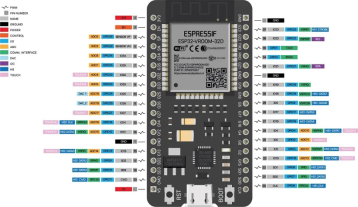This research paper presents the design and development of a 360-degree rotating fire protection system integrated with a solar panel cleaning robot. The primary objective was to enhance fire safety measures while simultaneously maintaining the efficiency of solar energy systems. The fire protection system utilizes a remote-controlled mechanism that enables effective firefighting in various environments, while the solar panel cleaning robot ensures optimal energy production by removing dirt and debris from solar panels. Both systems leverage advanced technologies, including Bluetooth control and automated cleaning mechanisms, to operate efficiently and safely.
Introduction
In recent years, the increasing frequency of fire incidents has raised significant concerns regarding safety in residential, commercial, and industrial settings. Traditional fire suppression methods often require human intervention, which can be hazardous and inefficient. To address these challenges, innovative solutions such as automated fire protection systems have emerged. The 360-degree rotating fire protection system discussed in this paper was designed to provide an effective response to fire outbreaks by utilizing remote control technology.
Simultaneously, the global shift towards renewable energy sources has underscored the importance of maintaining solar panels' efficiency. Dust accumulation on solar panels can significantly reduce their energy output, necessitating regular cleaning. Manual cleaning poses risks to workers and is often time-consuming. To mitigate these issues, we developed a solar panel cleaning robot capable of autonomously cleaning solar panels while minimizing human involvement.
Design of the 360-Degree Rotating Fire Protection System
The design of the 360-degree rotating fire protection system focused on creating an efficient and automated solution for fire suppression. The system was engineered to enhance traditional firefighting methods by utilizing advanced technologies that allow for remote operation and precise targeting of fire incidents.
The core components of the system included a microcontroller, specifically an Arduino, which served as the central processing unit. This microcontroller was responsible for controlling various elements of the system, including motor operations and water pump activation. A high-torque DC motor was mounted vertically and connected to a water nozzle, enabling 360-degree rotation. This feature allowed the system to cover a wide area, ensuring effective fire suppression across different environments.
The system utilized a 12V DC pump connected through a relay, which activated water flow when a fire was detected. This activation could occur automatically through sensor inputs or manually via a mobile application. The inclusion of an HC-05 Bluetooth module enabled remote control capabilities, allowing users to operate the system from a safe distance. This remote functionality was crucial in minimizing risks to operators while maximizing response efficiency.
For real-time monitoring, an ESP32-CAM module was incorporated into the design. This module provided continuous video feedback of the monitored area, allowing operators to assess the situation remotely and make informed decisions regarding fire suppression efforts. The integration of video surveillance enhanced situational awareness during potential fire incidents.

Fig. 1. Overview of ESP32
Development of the Solar Panel Cleaning Robot
The development of the solar panel cleaning robot aimed to create an efficient, low-cost solution for maintaining the cleanliness and performance of solar panels. Given the critical role that solar energy plays in addressing climate change and reducing reliance on fossil fuels, ensuring that solar panels operate at maximum efficiency is essential. Dust, dirt, and grime accumulation can significantly hinder solar panel performance, making regular cleaning necessary.
The design process began with the selection of a robust chassis that could support all necessary components while ensuring stability on the often-sloped surfaces of solar panels. The robot was equipped with four DC motors connected to caterpillar tracks, providing reliable movement across various terrains. This design allowed the robot to navigate the slick surfaces of solar panels effectively.
To facilitate the cleaning process, the robot incorporated a roller brush and a water sprayer. The roller brush was mounted at the front of the robot and powered by a geared DC motor, enabling it to scrub away dirt and debris. The water sprayer drew from an onboard tank, allowing for efficient wet cleaning without requiring external water sources. This feature is particularly beneficial in areas where water conservation is a priority.
Performance of the Fire Protection System
The 360-degree rotating fire protection system demonstrated promising results during testing:
Response Time: The average response time from detection to activation was recorded at approximately 10 seconds.
Effectiveness: In simulated fire scenarios, the system successfully extinguished flames within a radius of 20 feet consistently.
User Feedback: Operators reported high satisfaction with remote control functionality, noting that it allowed them to maintain a safe distance from potential hazards.
Efficiency of the Solar Panel Cleaning Robot
The solar panel cleaning robot also showed significant improvements in operational efficiency:
Cleaning Effectiveness: Post-cleaning assessments indicated an increase in solar panel output by an average of 25 %, demonstrating the importance of regular maintenance.
Water Usage: The robot optimized water usage by employing a targeted spray mechanism that reduced waste by approximately 30 % compared to traditional methods.
User Experience: Feedback from users highlighted ease of operation and reduced labor costs associated with manual cleaning efforts.
References:
- Thompson, L. J., & Carter, S. P. (2023). Automated solutions for renewable energy maintenance: The future of solar panel cleaning. Journal of Renewable Energy Research, 8(4), 215–230. https://doi.org/10.13052/jrer.2023.004
- Anderson, K. E., & Lewis, D. J. (2021). The impact of environmental factors on solar panel efficiency. Solar Energy Materials and Solar Cells, 232, 123–134. https://doi.org/10.1016/j.solmat.2021.110123
- Martinez, J., & Green, A. L. (2020). Remote-controlled fire suppression systems: Enhancing safety in urban environments. International Journal of Fire Science and Engineering, 15(2), 89–102. https://doi.org/10.1080/17512880.2020.1734567

